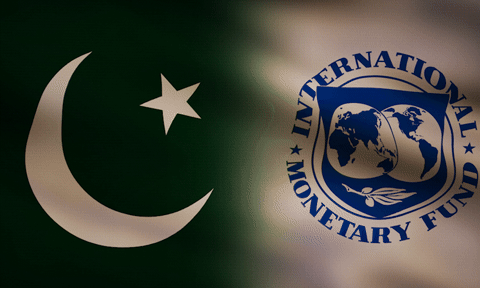ISLAMABAD: The poverty rate in Pakistan over the past five years has increased from 38.6 percent to 39.5 percent, revealed a study conducted by the Pakistan Institute of Development Economics (PIDE) released here on Friday.
According to the report, the national poverty rate has reached 39.5 percent while in Balochistan it is 70 per cent, in Khyber-Pakhtunkhwa (KPK) 48 per cent, in Sindh at 45 per cent and in Punjab poverty rate stands at 30 per cent.
The report revealed that rural areas have recorded higher poverty rates than urban areas across the country, as the poverty rate in rural areas was recorded at 51 per cent, whereas, in urban areas 17 per cent.
No reduction in poverty in sight: World Bank projects 1.8pc growth
Except for Sindh, multidimensional poverty has decreased in the provinces as in Balochistan the headcount ratio has dropped from 72.4 per cent in 2014-15 to 70.5 per cent in 2019-20, in KP from 49.1 per cent to 48.8 per cent while in Punjab the share of multidimensional poor decreased from 31 per cent to 30.4 per cent. In Sindh, however, the headcount ratio increased from 43.1 per cent in 2014-15 to 45.2 per cent in 2019-20, the report said.
The PIDE said that the report presents multidimensional poverty using various rounds of Pakistan Social and Living Standards Measurement (PSLM) surveys.
The Multidimensional Poverty Index (MPI) is developed using the Alkire-Foster (AF) method, and comprises three dimensions: education, health, and living standards, these dimensions collectively entail 15 indicators.
Three indicators are under the education dimension (year of schooling, child school attendance and school quality), four indicators are under the health dimension (access to health facilities, immunisation, anti-natal care and assisted delivery) while eight indicators are used within the dimension of living standards (water, sanitation, wall, overcrowding, electricity, cooking fuel, assets and land and livestock). Nested weights are used to determine the value of each dimension and indicator.
Following the AF method, this reports also for the first time designs a multidimensional poverty index to measure digital poverty in Pakistan. Pakistan’s ICT MPI consist of three dimensions, namely, ICT availability, ICT access and affordability and ICT literacy. Within these dimensions collectively eleven indicators are used to measure acute digital deprivation in the country.
Four indicators are under the ICT availability dimension (basic ICT items, modern ICT items, basic ICT communication and modern ICT communication), four indicators are under the ICT access and affordability dimension (internet access, ICT affordability/access, affordability/access of ICT for communication and internet affordability/access, while the ICT literacy dimension contains three indicators (use of computer, use of mobile and use of internet). These dimensions and indicators are respectively assigned weights to measure the digital poverty in Pakistan.
The magnitude of Multidimensional Poverty: Recent estimates show that 39.5 per cent of population is identified as multidimensional poor. The average intensity of deprivation which reflects the share of deprivation each person experiences on average is 48.3 per cent. In other words, each multi-dimensionally poor person in Pakistan on average is deprived in nearly half of the 15 weighted indicators used for MPI calculations.
Pakistan’s national MPI, which is the product of the percentage of poor people and the average intensity of poverty, stands at 0.191. This indicates that poor people in Pakistan experience 19.1 per cent of the deprivations that would be experienced if all people were deprived in all indicators.
In terms of the percentage contribution of each of the 15 indicators, the largest contribution comes from year of schooling at 33.15 per cent followed by health facilities with 18.95 per cent and school attendance with 10.7 per cent. When aggregating the indicators by dimensions, the largest contribution is due to education with 49.4 per cent followed by standards of living with 26.5 per cent.
While deprivation in health with 24.1per cent has the lowest contribution among the dimensions.
Multidimensional poverty has slightly increased in 2019-20 compared to 2014- 15. The percentage share of multidimensional poor has increased from 38.6 per cent in 2014-15 (the last time MPI was calculated) to 39.5 per cent in 2019-20. This marginal increase signifies a deviation from the historical pattern of multidimensional poverty in Pakistan.
Over the last 15 years, multidimensional poverty in Pakistan has consistently declined. The trajectory from 2014-15 to 2019-20, however, is in the opposite direction. For the first time in 15 years, the population share of multidimensional poor in the country has increased.
Regional Poverty: The regional spread of MPI informs that primarily the increase has occurred in urban areas of the country. The headcount ratio in the urban areas has increased from 9.5 per cent in 2014-15 to 17.3 per cent in 2019-20 exhibiting almost 50 per cent increase in urban poverty.
Even though multidimensional poverty in Pakistan is mostly concentrated in the rural areas its share is in consistent decline. Rural poverty has dropped form 54.2 per cent in 2014-15 to 51.9 per cent in 2019-20.
Among the four provinces of Pakistan, multidimensional poverty is highest in Balochistan where around 70 per cent of the population identified as multi-dimensionally poor, followed by KPK 48per cent and Sindh 45per cent. Punjab has the lowest incidence of multidimensional poverty in the country with 30 per cent of its population identified as poor, it is the only province that has a lower headcount ratio than the national average of 39.1per cent.
According to the estimates, 44.1per cent of Pakistan’s population is identified as multidimensional ICT poor. This shows that around half of the country’s population faces acute deprivation in availability, access and affordability of ICT services and severely lack digital literacy. The intensity which shows the share of deprivation each person experiences on average is 43.7per cent.
Copyright Business Recorder, 2024

























Comments
Comments are closed.